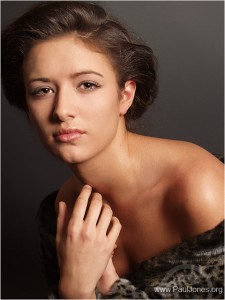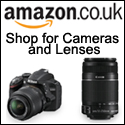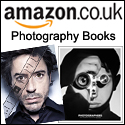I was asked to prepare a presentation this week on portrait photography, so spent some time considering what I think are the essential ingredients for a successful portrait.
Of course, portrait photography is such a vast subject that everyone will have their own ideas of what works best. And there are numerous examples of photographs that defy all the general ‘rules’ and work well. Here are just a few things to consider:
1. The Subject
My feeling is that some people are just naturally more interesting to look at than others. For example, photographs of celebrities are often more interesting than those featuring ‘ordinary’ people. Consider the images you’ve seen of the likes of Clint Eastwood, Brad Pitt, Daniel Craig, George Clooney, etc.
Similarly, feel free to disagree, but I think our eyes are more drawn to beautiful faces than ‘plain’ ones. Here, I’m considering images of the likes of Audrey Hepburn, Grace Kelly and Elizabeth Tayor.
Consider ways to add more interest to your images. How can you bring out more personality, character or ‘inner beauty’?
2. Expression
Perhaps leading on from point 1 is the expression shown by the person in the image. Actors and celebrities are used to being in front of the camera so know what expressions work well for them.
Coaxing a natural expression from your subject looks far more convincing than a forced expression or a fake smile. So often I see well lit and well taken photographs but the person’s expression has just killed the image. It comes down to establishing a good rapport with your subject and helping them to feel comfortable and relaxed enough to let them be themselves.
3. Composition
We notice composition, but not always on a conscious level. Our eyes are drawn to certain elements in an image. Things to consider here are where you place the most interesting features of the person within the frame. Placing the person dead centre and looking straight ahead can often look less interesting than an off-centre composition.
Consider ‘the rule of thirds’ and then also consider breaking it for effect. Things that can work well include having the eyes higher up in the frame (in a top third); allowing room for the subject ‘to look into’ and one that causes some controversy with some photographers – chopping the top of the head off. Experiment with composition to add interest.
4. Focus on the Eyes
Unless the eyes are closed or looking away, the general rule is to focus on the eyes and have them sharp in the image. The eyes can convey emotion and some say they are the window to the soul. A portrait where the eyes are soft or blurry won’t have the same impact as one where the eyes are sharp.
5. Catchlights
Unless you’re a photographer, people often don’t really notice catchlights in the eyes until they aren’t there. The catchlight is simply the highlight/s in the subject’s eye from the light source. Eyes without a catchlight are often deemed to be lifeless or ‘dead eyes’ and don’t look as attractive as eyes with a pleasing catchlight.
People have their own preferences as to whether they like large or small catchlights and also whether they prefer round, square or oblong ones. Purists would argue that there should only ever be one catchlight, whereas flicking through fashion magazines show photographs featuring multiple catchlights.
6. Lighting
There is no ‘one lighting for all’ rule. The key is to use lighting that compliments your subject. A male bodybuilder would suit harder lighting, whereas a glamour shot might call for soft lighting.
How you choose to light the subject can have a huge effect on the final photograph. Lighting can help to make your subject look younger/older and heavier/slimmer. If you work with studio lighting read up on ‘short lighting’, ‘broad lighting’, ‘beauty lighting’, ‘clamshell lighting’ and ‘Rembrandt lighting’.
7. The Background
Ideally, we don’t want to notice the background too much as we want the person to be the main point of interest within the photograph. The key here is to choose a background that doesn’t distract attention away from the subject. The use of plain white, black or grey backgrounds has been used for years in studio photography to focus all attention onto the subject.
In a natural environment consider ways to throw the background out of focus, for example by moving the person away from the background or using a wider aperture to give a shallow depth of field to blur the background. Unless there is a compelling reason to make the background a significant part of the image (for example a graffiti wall) try to minimise it as much as you can.
8. Point of View
Changing your point of view or shooting perspective can add interest to your image. Photographing small children? Move down to their level and engage with them rather than shooting down on them. Look for ways to add drama – lie down on the floor and shoot up; use angles; think outside the box…
9. Props
Just a brief mention of using props in your images. Props can help to convey a story but ensure they are appropriate to the image. Photographing a chef in his kitchen? Sure, bring in his knives or pans to show what he does.
Try to avoid photographic cliches. I frankly cringe a little when I see studio glamour images of girls holding guns or an umbrella. Other cliches on my list would be girls in bowler hats; holding a long cigarette holder, wearing a feather boa, stripey socks and fake reflections…… I’m sure you get the picture.
10. Post-Processing and Retouching
Lastly, just a mention of how we choose to process our RAW files. If your images look over-processed then, unless you’re deliberately going for that effect, it’s time to back it off slightly. Have you ever seen images on the web where the person has glowing white eyes or ‘plastic skin’?
Of course, the vast majority of digital portraits, beauty and glamour shots will have been retouched but the trick is to not make the work obvious to spot.
Well, there’s my list. I’m sure you’ll have others to add to it, but I hope it’s been useful. Thanks for reading. I’ll finish with one of my favourite portraits – a studio portrait of Rachel (click to enlarge). Feel free to post comments.






Hi,
I was reading on dpreview your comments on ‘dragging the shutter’ – very informative – thank you.
That said I do think one can take a good portrait of what you might call an ordinary person – not a clelebrity.
I reside in Portugal but used to live in Chehsire for many years.
Kind regards
Ronnie
Hi Ronnie
Thanks for commenting. And, yes, I agree with you.
Hi Paul
I’ve just stumbled across your blog and although I should be shooting soon I keep saying to myself 1 more post! Great reading!
The only thing I will add however is to the celebrity vs plain face portrait point of view- is this not because we as humans are intrinsically nosey and the celebrity status now is over used? The viewer would rather see people they know, worship, respect or even despise! A photographers pint of view is different, looking for form, lighting, personality and character!
I would personally rather shoot an interesting face, that is to say somebody with character, a quirk and unusual look!
Anyway off to the next post!
I’ve added the blog to the desktop for future reference!
Kindest Regards
Dave
Hi Dave
Thank-you for your comment. I’m really flattered that you like my site.
I do agree with your thinking regarding celebrity status. When I wrote my original blog post I was thinking of powerful celebrity images that have stuck in my mind from the likes of Terry O’Neill; Rankin; Andy Gotts; Mark Seliger; William Coupon; Marco Grob, etc, etc. Iconic celebrity images – made great by the faces interacting with the camera, but also the skill of the photographer.
Cheers
Paul